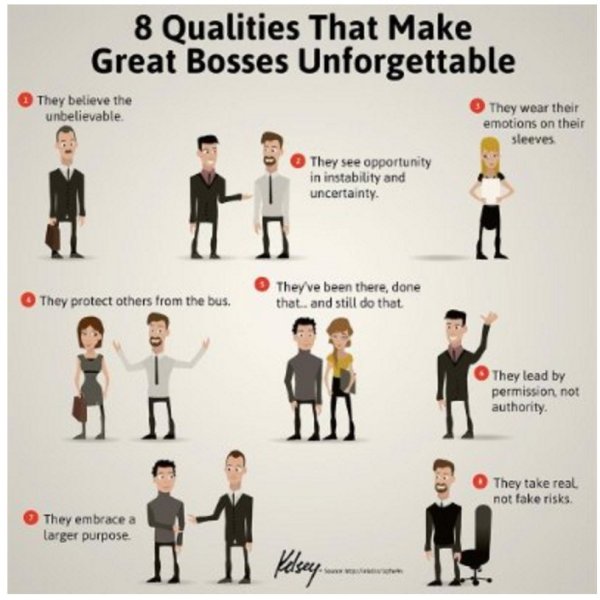 Photo Credit: Identity Magazine, Shereen Gaber
Photo Credit: Identity Magazine, Shereen Gaber
We burn entirely too much energy and each other’s time commiserating over bad bosses. We are all best served by remembering the great ones and what it is about them that makes us better for knowing them. When we take the time to puzzle out what makes for a great boss, we have the path marked for becoming that sort of boss…or leader…ourselves.
Last week, I discovered a piece on great bosses by seminary dean and leadership writer Chuck Lawless. In a bit, you will read his 10 characteristics he puts forward as common in his personal experience of top ten leaders.
10 Common Characteristics of the Top Ten Leaders I’ve Ever Worked With – Chuck Lawless
First though, after i took some time myself, thinking back on what was it about the great bosses I had that distinguished them above all others.
Here are my 10 Characteristics of Great Bosses, in no particular order:
- They were trustworthy. We knew they had our back…always.
- They had consummate integrity. They were consistent in attitude and action no matter the audience. Even under intense pressure, whatever it cost them, they stood their ground for what mattered.
- They showed faith in me and each of us on the team. Not just to get the job done but to do it as only I/we could.
- They (those male leaders) didn’t treat us women differently. In fact, if they ever did seem to treat us differently, the great ones modeled a valuing of what the women brought to the conversation. Great leaders never diminished us, either overtly or covertly.
- They showed genuine care, even fondness, for us. They didn’t just spend their best time and energy on work meetings outside our team. They actually carved time out with us as a team for seemingly the sheer joy of it.
- They gave us a voice in the decision-making…especially as it related to our particular work and how we thought it should be done.
- They knew us well enough to call us on our own character stuff. It was never just about the work, the project, the product or service. It was about our own growth.
- They kept a sense of humor and regularly brought perspective. This wasn’t just about lightening the mood; this was about returning our thinking to the bigger picture, the greater good.
- They provided opportunities for each of us to keep growing and developing professionally.
- They pushed us in meaningful ways toward a shared vision…to keep our focus and stay on track.
That’s my 10 in looking back to the many great bosses…invaluable leaders…I’ve had in my career.
Dr. Lawless’ 10 Common Characteristics are these (go to his article for helpful commentary on each).
- They know Christ. – (his article was to a Christian audience. Still, many consider Jesus of Nazareth the greatest leader who ever lived.*)
- They continually dream about what’s next.
- They trust the team they’ve enlisted.
- They take care of their team.
- They read present-tense reality well.
- They get a lot done while still taking time off.
- There is no pretense in them.
- They know the organization is bigger than they are.
- They laugh a lot.
- They adore their family and make time for them. – Chuck Lawless
12 Characteristics of Effective Team Members – Chuck Lawless
*The Greatest Leader of All – Geoff Loftus
Whatever experience we have had with great bosses or those not so much, we can learn from them. I was glad to have Dr. Lawless’ prod to look back on the leadership in my own life. It was remarkable how both great bosses and bad ones hang in our memories. One day I might write about the bad ones – and I have stories… Today, I just want to think about them with compassion, figuring they didn’t get to that place without being negatively influenced somewhere along the way.
As for those great bosses…the ones who lead brilliantly, with genuine care and provision for those who work under them…here’s to you. May we learn from you, follow hard after you, and not be shy to show our own appreciation and consideration for you as well.
 Photo Credit: Twitter, David Chou
Photo Credit: Twitter, David Chou
In closing, I would love to hear about some of your great bosses… those leaders in your lives that stand out in your memory (or present experience). Please comment below. Feel free to tell stories or give tributes. We can celebrate together!
Are You a Great Boss? – John Lynn, Healthcare IT Today
Four Types of Bosses You Need to Avoid – Shereen Gaber
Photo Credit: Workboard






